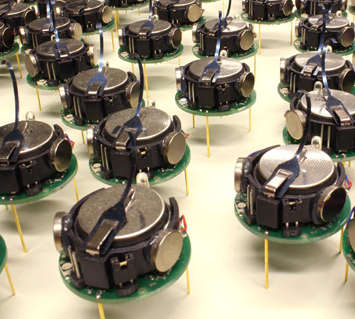| What Intelligent Machines Can Learn From A School Of Fish |
| Written by Mike James | |||
| Saturday, 07 October 2017 | |||
|
We haven't reported a good TED talk on AI or programming for some time, perhaps because they are getting thinner on the ground. This one, however, is very good indeed and if you are interested in flocking or swarm behavior you need to see it. How the simple becomes impressive. Robotics engineer and head of the Self-Organizing Systems Research Group at Harvard, Radhika Nagpal, studies the collective intelligence displayed by insects and fish schools, seeking to understand their rules of engagement. She presents her work creating artificial collective power and previews a future where swarms of robots work together to build flood barriers, pollinate crops, monitor coral reefs and form constellations of satellites.
At first it all seems like a mind warping idea but you need to remember that complex life is itself just a swarm of cells - yes that's you I'm talking about.
If you are looking for a programming lesson from the swarm then it is very similar to the old dictum of "think local. act global". In this case what you have to do is find local rules that result in global behavior. One of my own first research jobs was writing programs for a large parallel computer composed of simple computational cells. Each cell could only communicate with its neighbours and it could form Boolean functions of its states. It was fairly obvious how to program it to find edges say - the rule is if you are black (1) and have a white (0) neighbour then you are an edge cell. Some things proved easy to find rules for, others were much more complicated. Once you start to work with more complex systems the local rules can also be more complex, but the important point is that simple local rules create something more sophisticated as actions propagate thought the swarm. That is, the action results from the local conditions, but the action changes that local condition and hence what the other devices actually do. This is like feedback and recursion rolled into one and it is why swarms are more than the sum of their simple rules. More InformationSelf-Organizing Systems Research Group Related ArticlesHow To Disrupt Spontaneous Synchronicity Quadrotor Swarm Constructors (video)
To be informed about new articles on I Programmer, sign up for our weekly newsletter, subscribe to the RSS feed and follow us on Twitter, Facebook or Linkedin.
Comments
or email your comment to: comments@i-programmer.info |
|||
| Last Updated ( Saturday, 07 October 2017 ) |



